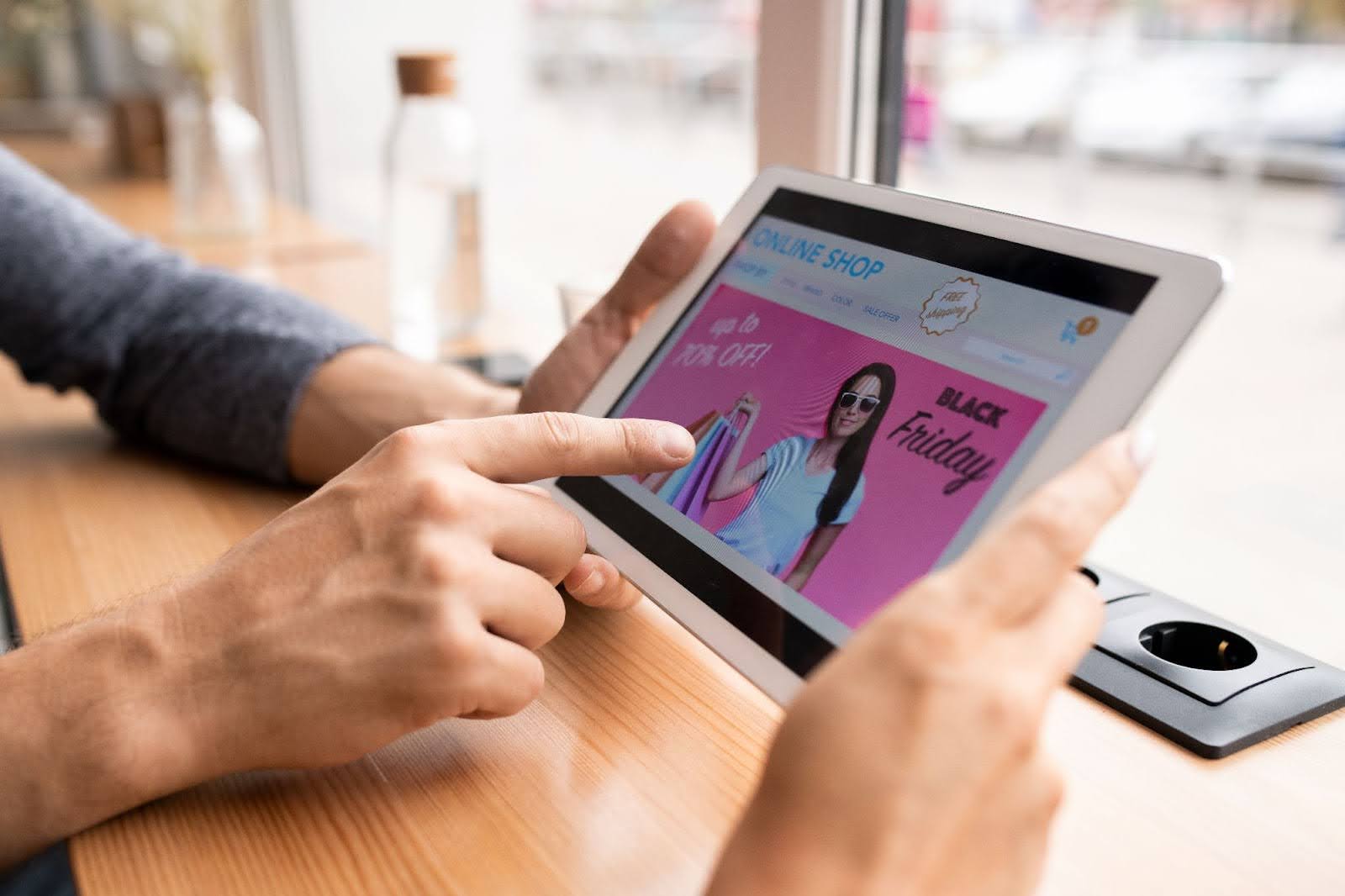Jump to…
Understanding Organic vs. Paid Social Media
Major Social Media Advertising Platforms- How Social Media Advertising Mechanics Work
- Real-World Examples for Beginners
- Getting Professional Help
- Making Your Decision
- Frequently Asked Questions
- Ready to Launch Your First Profitable Campaign?
- About the Author: Brett Williamson

Social media has become the town square of the digital age, where millions of conversations happen every second. While posting regular content keeps your business visible, strategic paid advertising amplifies your message to reach exactly who needs to hear it. But what exactly is paid social advertising, and how does it differ from the free posts you’re already sharing?
Social media paid advertising is essentially renting space on platforms like Facebook, Instagram, and LinkedIn to show your message to specific audiences. Unlike organic posts that rely on followers and algorithms to be seen, paid ads guarantee your content reaches people based on precise targeting criteria you set. Think of it as the difference between hoping someone walks by your storefront versus putting up a billboard on the busiest highway in town.
Understanding Organic vs. Paid Social Media

Organic social media involves posting content without paying for promotion. Your posts appear in followers’ feeds naturally, though platform algorithms determine how many people actually see them. The reach depends on engagement, timing, and the platform’s ever-changing rules about content visibility.
Paid social media advertising puts your content directly in front of people who haven’t necessarily followed your business yet. You pay the platform to show your ads to users who match specific demographics, interests, behaviors, or locations. This means a local bakery in Phoenix can target only people within five miles who have shown interest in desserts and celebrations.
The key difference lies in control and scale. Organic content builds relationships with existing followers, while paid advertising expands small business reach to potential customers who might never discover your business otherwise.
Major Social Media Advertising Platforms

Facebook Advertising remains the largest social media advertising platform, offering sophisticated targeting options that can pinpoint audiences based on age, location, interests, and even life events. A Facebook ad might appear as a sponsored post in someone’s news feed, showing a local restaurant’s special menu to people within driving distance who have liked similar dining pages.
Instagram Advertising leverages Facebook’s targeting system but focuses on visual storytelling through photos, videos, and stories. These ads blend seamlessly into users’ feeds, making them feel more natural and less intrusive. A fitness studio might use Instagram ads to showcase workout videos to health-conscious individuals in their neighborhood.
TikTok Advertising targets younger audiences through short, engaging video content that feels native to the platform’s entertainment-focused environment. A trendy clothing boutique could create dance-style videos featuring their latest arrivals, reaching fashion-conscious teens and young adults.
LinkedIn Advertising specializes in professional audiences, making it perfect for B2B companies or services targeting business owners and decision-makers. A consulting firm might use LinkedIn ads to reach executives in specific industries who are likely to need their expertise.
YouTube Advertising places video content before, during, or after other videos, reaching people already engaged with video content. A home improvement company could show tutorial-style ads to homeowners watching DIY content.
How Social Media Advertising Mechanics Work
Setting up paid social campaigns involves three main components: budgets, targeting, and creative formats. Your budget determines how much you spend daily or over the campaign’s lifetime. Most platforms allow you to start with as little as $5 per day, making it accessible for small businesses testing the waters.
Targeting options let you define exactly who sees your ads. You can target based on demographics like age and location, interests such as hobbies or favorite brands, behaviors including recent purchases or app usage, and custom audiences like people who have visited your website or interacted with previous ads.
Creative formats vary by platform but generally include single images, video content, carousel ads showing multiple products, and story formats that feel more personal and immediate. The format you choose should match both your message and where your audience expects to see it.
Budget allocation works on an auction system where you compete with other advertisers for the same audience. Platforms automatically optimize to show your ads when they’re most likely to achieve your goals, whether that’s clicks, calls, or purchases.
Real-World Examples for Beginners
Consider a local plumbing company wanting to attract emergency repair calls. They could create Facebook ads targeting homeowners within 20 miles, focusing on people aged 30-65 who own their homes. The ad might feature a video of a satisfied customer testimonial, with text highlighting 24-hour availability and same-day service.
A yoga studio looking to fill evening classes might target working professionals aged 25-45 within a 15-minute drive. Their Instagram ads could show calming studio images with class schedules, targeting people interested in wellness, stress relief, and fitness activities during lunch hours when they’re likely scrolling social media.
A local restaurant wanting to increase weekend dinner reservations could run TikTok ads showing quick clips of signature dishes being prepared, targeting food enthusiasts and young professionals within their delivery area during Thursday and Friday afternoons when weekend plans are being made.
An accounting firm preparing for tax season might use LinkedIn ads to reach small business owners and entrepreneurs in their region, showing carousel ads that highlight different services like bookkeeping, tax preparation, and business consulting.
Getting Professional Help
Many small businesses feel overwhelmed by the technical aspects of setting up campaigns, choosing the right targeting options, and creating effective ad content. At Ad Genius, dozens of small businesses have successfully launched their first profitable campaigns with professional guidance that takes the guesswork out of paid advertising.
Working with experienced advertisers means avoiding common mistakes like targeting too broadly, using poor-quality images, or setting unrealistic expectations for immediate results. Professional campaign management includes ongoing optimization, performance monitoring, and creative refreshes that keep ads performing well over time.
The learning curve for social media advertising can be steep, especially when trying to balance targeting precision with budget efficiency. Expert guidance helps businesses focus on what they do best while ensuring their advertising investment generates real results.
Making Your Decision
Social media paid advertising offers small businesses an unprecedented opportunity to compete with larger companies by reaching exactly the right people at the right time. The ability to start small, test different approaches, and scale successful campaigns makes it accessible for businesses of any size.
The platforms provide detailed analytics showing exactly how your ads perform, which audiences respond best, and what content generates the most engagement. This data-driven approach means you can continuously improve your results and maximize return on investment.
Success with social media advertising requires patience, creativity, and willingness to test different approaches. What works for one business might not work for another, but the platforms provide enough flexibility to find the right combination of targeting, messaging, and creative content for any industry.
If you’re ready to test social media paid advertising but feel uncertain about where to start, professional help can build your first campaign and guide you through the process of turning social media users into paying customers.
Frequently Asked Questions
How much should I budget for my first social media advertising campaign?
Most platforms allow you to start with as little as $5-10 per day, making it accessible for small businesses. A realistic starting budget ranges from $300-500 per month, which gives you enough data to test different audiences and creative approaches. This amount allows platforms to optimize your campaigns effectively while providing meaningful results to evaluate.
How long does it take to see results from social media ads?
You can expect to see initial data within 24-48 hours of launching your campaign, but meaningful results typically take 1-2 weeks. This timeframe allows the platform’s algorithm to learn which audiences respond best to your ads. Most businesses see their best performance after running campaigns for 30 days, as this provides enough time for optimization and refinement.
Which social media platform should I advertise on first?
Facebook remains the best starting platform for most small businesses due to its sophisticated targeting options and broad user base. If your business targets younger audiences (under 30), consider starting with Instagram or TikTok. For B2B companies or professional services, LinkedIn often delivers the highest quality leads, though at a higher cost per click.
Can I run social media ads without a website?
While having a website improves campaign performance, many platforms offer alternatives. Facebook and Instagram allow you to direct traffic to your business page, phone number, or messaging apps. However, a dedicated landing page typically converts better than social media profiles, making a simple website worthwhile for serious advertising efforts.
How do I know if my social media ads are working?
Key metrics to track include cost per click, conversion rate, and return on ad spend. If you’re generating leads or sales at a cost lower than your profit margin, your ads are working. Most platforms provide detailed analytics showing which ads perform best, helping you identify successful strategies to expand and unsuccessful ones to modify or eliminate.
Ready to Launch Your First Profitable Campaign?
Social media advertising doesn’t have to feel overwhelming when you have the right strategy and support. Whether you’re looking to increase local awareness, generate qualified leads, or drive online sales, a well-executed paid social campaign can transform your business growth.
Don’t let another month pass watching your competitors capture your potential customers online. Get your free marketing report and discover exactly how social media advertising can work for your business. Our team will analyze your current digital presence and create a customized strategy that fits your budget and goals.
Ready to get started? Schedule your free consultation today and let’s build your first campaign together.
